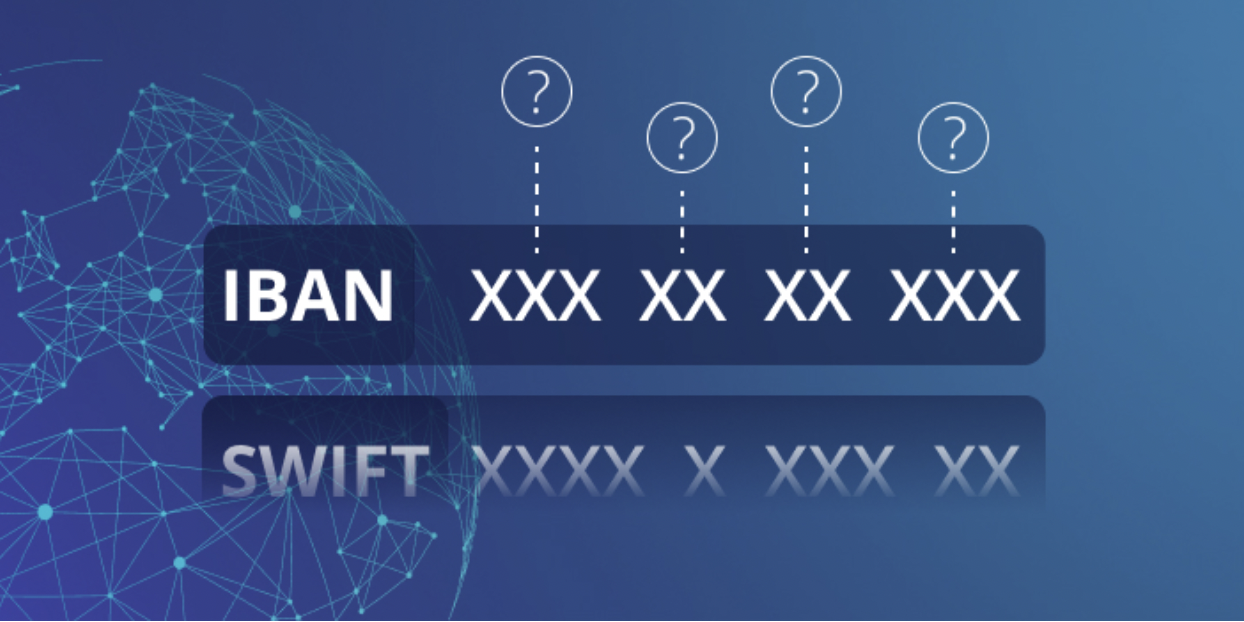IBAN stands for International Bank Account Number, and it is a standardized international numbering system used to identify overseas bank accounts. IBAN transfers are electronic fund transfers that allow individuals to send money to a recipient’s bank account in a different country. It is to make a note that IBAN does not replace the bank’s original numbering. As of December 2022, 83 countries were using the IBAN numbering system, it is only meant to provide assistance in added data which helps in detailed overseas information.
In this article, let’s dive deeper into what an IBAN transfer is, how it works, and its examples.
Who uses IBAN?
IBAN is predominantly used by banks across the European Union Countries and has been adopted worldwide, but not all banks and regions have joined the standard. Countries outside of Europe, such as North America, Australia, and Asia, typically only use IBAN when sending payments to a country that has adopted it.
How International Bank Account Numbers (IBANs) Work
The IBAN number consists of a two-letter country code, followed by two check digits, and up to thirty-five alphanumeric characters. These alphanumeric characters are known as the basic bank account number (BBAN). It is up to the banking association of each country to determine which BBAN they will select as the standard for that country’s bank accounts.
An IBAN number will be used when sending interbank transfers or wiring money from one bank to another, especially across international borders. In the register of countries currently using the IBAN system, several examples are as follows
- Albania: AL47 2121 1009 0000 0002 3569 8741
- Cyprus: CY 17 002 00128 0000001200527600
- Kuwait: KW81CBKU0000000000001234560101
- Luxembourg: LU 28 001 9400644750000
- Norway: NO 93 8601 1117947An IBAN is made up of a maximum of 34 alphanumeric characters.
Why pay more for international money transfers when moneyHOP is here?
- NO hidden fees
- ZERO convenience fees
- Real-time updates
- Lowest exchange rates
What Does an IBAN Look Like?
IBAN is comprised of the following components:
- Country code: The country code is the ISO (International Organization for Standardization) country code. Countries that participate have one code that designates their country.
- Check digits: The check digits are provided by the issuing financial institution.
- Bank identifier: Code that identifies the financial institution. (When appropriate, the bank identifier may also identify the specific branch of the financial institution.)
- Basic bank account number (BBAN): This is a code that identifies an individual account at a specific financial institution in a specific country.
The chart below shows an example of an IBAN for a hypothetical bank in India. The IBAN number would be: IN21 1234 5698 7654 3210.
| Country Code | Check Digits | Bank Identifiers | Basic Bank Account Number |
| IN | 21 | 123456 | 9876543210 |
Why was IBAN created? / How can I obtain an IBAN?
IBAN was developed to improve cross-border payment verification and reduce errors, rejected payments, transfer delays, and associated fees. Customers of banks in an IBAN region can request an IBAN, but it can only be used for receiving payments and not for making withdrawals.
The Bottom Line
IBAN is a system used for international financial transactions and even today India doesn’t use IBAN for inward remittances, it uses SWIFT. Transferring money across borders can be challenging, but these systems aim to minimize problems in international transactions.

Leave a Reply